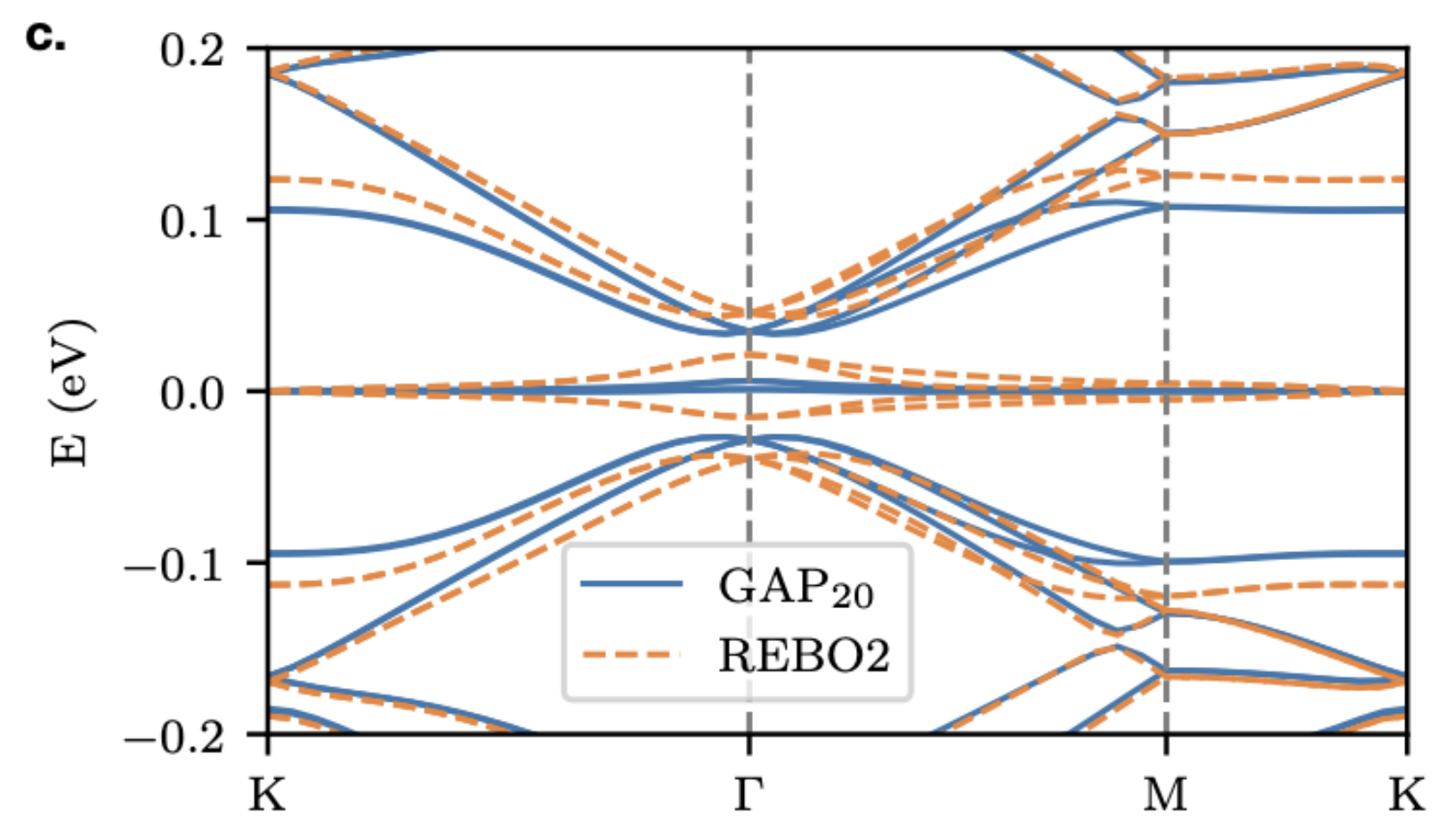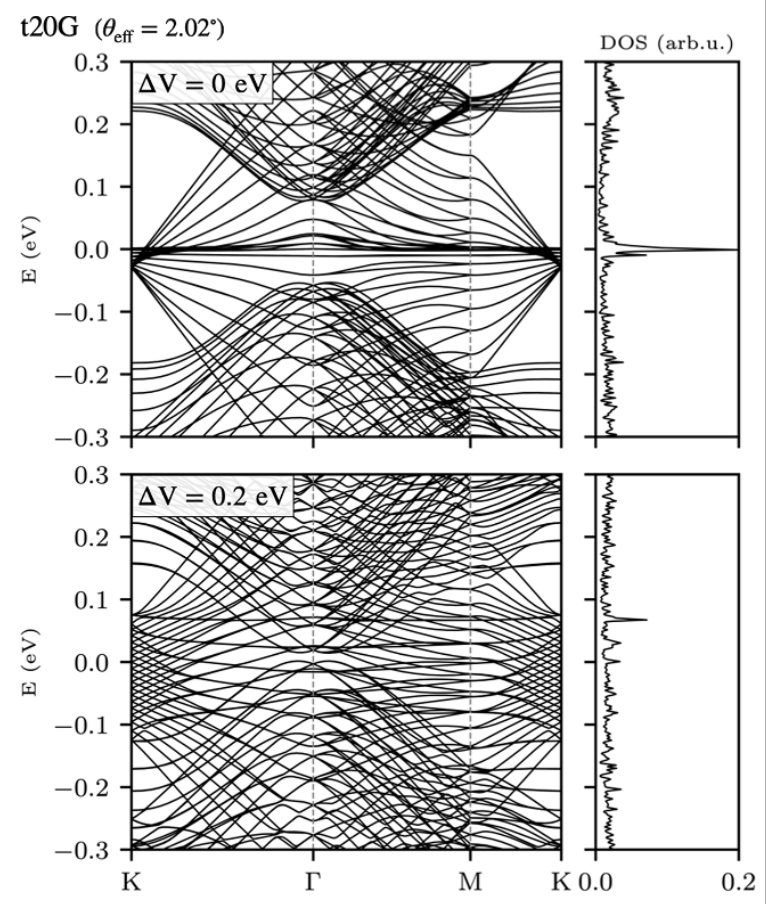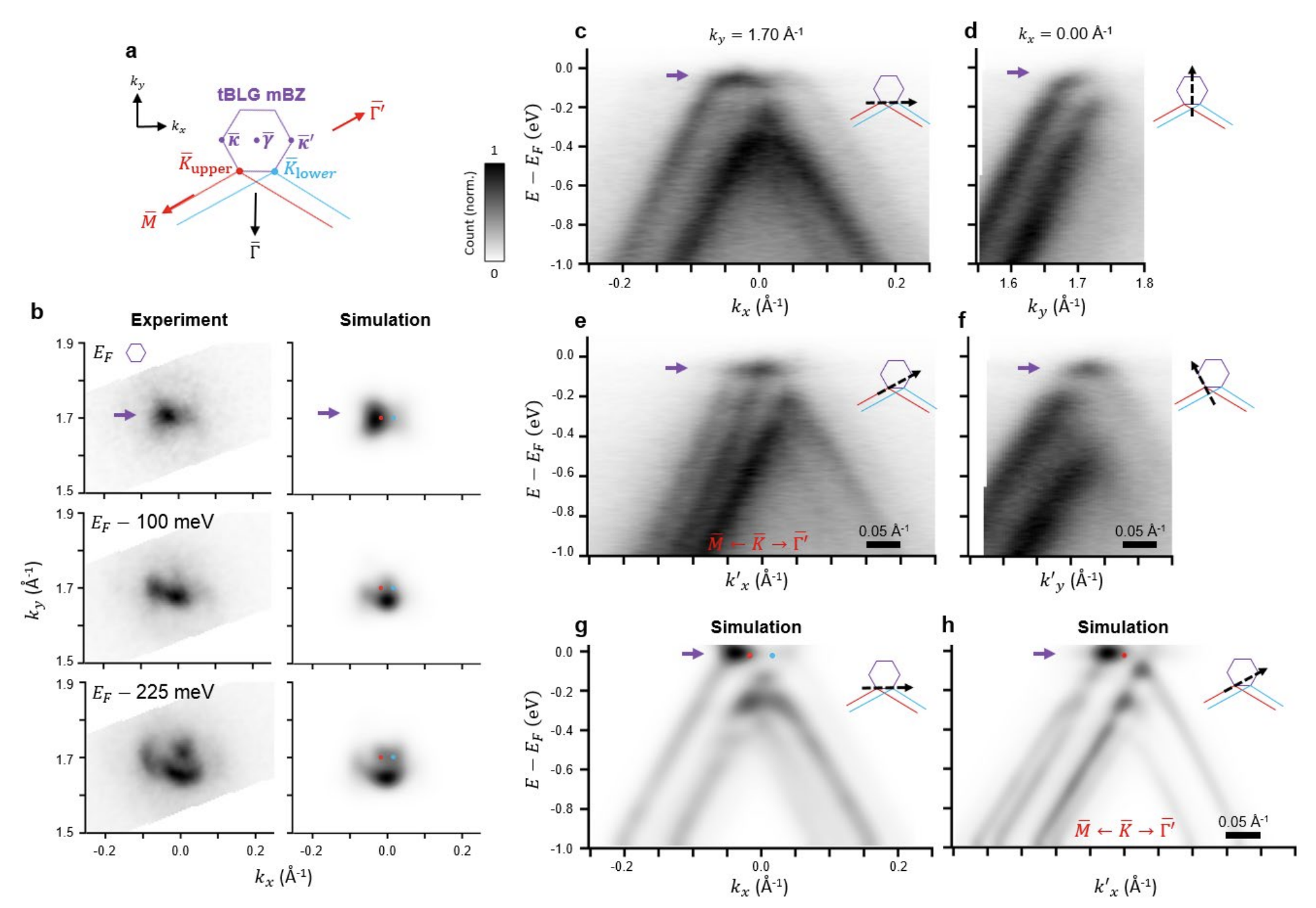GRABNES’s documentation¶
Description¶
This page aims to introduce you to the GRABNES package (GRAphene hBN Electronic Structure). The name itself highlights the two standard materials that can be studied using this package, by layering them into meaningful configurations. Additional 2D materials can be included as well by modifying the code. One can already build straight out-of-the box graphene on hBN, twisted bilayer graphene, twisted multilayer graphene, hBN encapsulated single layer graphene, encapsulated bilayer graphene, etc. where one can control the twist angle and the sliding between layers. Commensurate cells will be built to account for periodic boundary conditions.
In terms of electronic structure observables, one can calculate the electronic band structure, the density of states (using Lanczos recursion as well as exact diagonalization), the unfolded spectral band structure, the local density of states, the probability density based on the wavefunction distribution, the Kubo-Greenwood conductivity, etc.
If you are familiar with the field of twisted bilayer graphene, you are probably aware that the relaxation effects play an important role in the accurate assessment of the above observables. Hence, most of the calculations require an energy minimization step that can be routinely achieved using most Molecular Dynamics packages. We provide here the means to interface GRABNES with LAMMPS where LAMMPS reads in the commensurate cell provided by our package and our package reads in the relaxed positions from LAMMPS minimization output.
Getting started¶
GRABNES is a Fortran code. This can be daunting when you have never used this language, so to give you the opportunity to get a first taste of the GRABNES code without worrying about compilation issues and compiler questions, we have compiled a stable version of the code on Google Colab where you can interact with it using a Jupyter Notebook where Python is chosen as the language of choice. For heavier use of the capabilities of the code, including its OMP parallelization capabilities, we recommend compiling the code by yourself on your cluster.
Installation¶
The code is maintained on Github where you are free to clone or fork the stable or development versions of the code. Please refer to Github Documentation on how to do this. To install the code, one simply needs to modify the make.sys file to match the Compilers available on your system. The code has currently been tested using Intel Compilers. Add an empty .version file in the same folder as the make.sys file using touch .version, then type make clean, followed by make to clean and repopulate the build directory.
Twistronics 2023 Worshop¶
See Twistronics 2023 Workshop for the Google Colab notebooks that are used for the Twistronics 2023 Workshop Tutorial Sessions.
Tutorial Files from Moire Course¶
See Tutorial Sessions for some previous jupyter notebooks from an informal moire class among group members. This one requires you to compile the Fortran code yourself.
Tight-binding models¶
Several of the tight-binding models used in this code have been developed by researchers associated with this code. Hybrid F2G2 - Two-Center Approximation TB Models presents visually the general approach behind the so-called hybrid models that leverage the precision of accurate F2G2 models for the intralayer interactions and reparametrized two-center (TC) models that match as closely with DFT for the interlayer interactions.
Illustrations¶
Magic Angle Renormalization in Twisted Bilayer Graphene¶
We can calculate the electronic bandstructure of twisted bilayer graphene where we used our SHE model which is an improved Two-Center (TC) model which has been optimized to capture the DFT Tunneling at the K-point while allowing the user to tune it to capture the magic angle at a specific value. Here we set S so that the magic angle occurs at 1.08 degree when using the relaxed structures from an energy minimization using LAMMPS based on EXX-RPA-informed registry-dependent force fields. The intralayer terms used here in LAMMPS are either the widely used REBO2 forcefields or the machine-learning based GAP20 potential.

Twisted Multilayer Graphene Electric Bandstructures¶
A wide variety of layered materials can be considered in GRABNES. Here we implemented the Hamiltonian part of the code in such a way that a 20 layers twisted graphene system clearly showing the family of tBG bands that are expected in such tNG system. A flag in the GRABNES input file can be added to activate a perpendicular electric field.

Twisted bilayer graphene: band-unfolding¶
Our code allows to calculate the band-unfolded band structures that can help to understand experimental ARPES measurements. Here we observe good agreement between the experimental features obtained using nano-ARPES and simulated features obtained using our package.

Comparison of experimental APRES data with simulated band unfolded data using GRABNES. Figure published in Nature Physics.
Graphene on h-BN: gap estimation¶
h-BN encapsulated graphene: supermoire features¶
Percolating Impurity States in Defected Graphene¶
GRABNES code¶
The documentation for the code can be found here: GRABNES-code. This is work in progress and is being generated with sphinx-fortran.